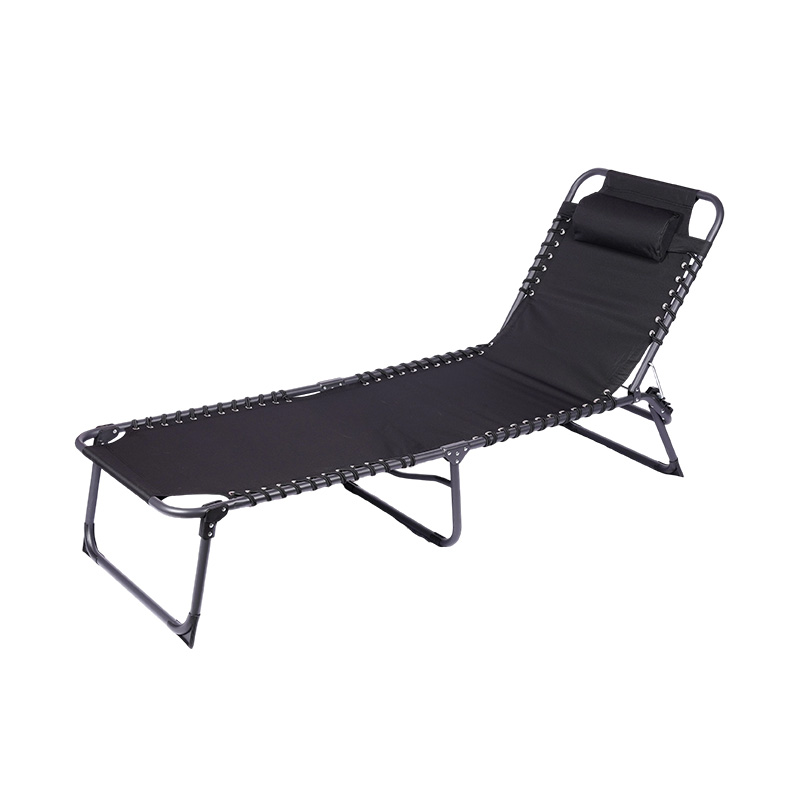The folding reclining sun lounger is a piece of outdoor furniture that blends comfort with versatility. At the core of its craftsmanship is the precision in the folding mechanism. This mechanism allows the lounger to be adjusted to multiple reclining positions, accommodating different user preferences. The smoothness and reliability of this adjustment are key indicators of high-quality design, reflecting careful engineering and attention to detail.

The frame construction is another aspect of craftsmanship. Many sun loungers use lightweight yet sturdy materials, such as powder-coated aluminum or treated steel, ensuring the lounger remains stable while being easy to move. Joints and hinges are often reinforced to withstand repeated folding and reclining, highlighting the attention to durability and long-term use.
Seating surfaces combine both comfort and resilience. Breathable mesh or weather-resistant fabric is carefully stretched and secured to provide a supportive and relaxing experience. Padding, when included, is evenly distributed to enhance comfort without compromising the folding functionality.
Designers also consider ergonomics in the lounger's shape and angle. The curvature of the seat and backrest, along with the height from the ground, is calculated to support the body efficiently, reducing pressure points during prolonged lounging.
Finally, the overall aesthetic is a reflection of craftsmanship. Sleek lines, minimal hardware visibility, and smooth finishes demonstrate that the lounger is not only practical but also visually appealing. The folding reclining sun lounger exemplifies a balance between thoughtful design, precise engineering, and user-focused comfort.
A folding garden table relies heavily on the quality and suitability of its materials. Outdoor furniture must withstand various weather conditions while remaining functional and visually appealing. Materials are carefully selected to meet these requirements, ensuring that tables remain sturdy, durable, and easy to maintain.
Frames are typically constructed from metals such as aluminum, steel, or powder-coated iron. Aluminum is lightweight and resistant to corrosion, making it ideal for portable tables that are frequently moved. Powder-coated steel offers additional strength while protecting against rust, ensuring longevity in humid or rainy environments. These metals form the backbone of a table's stability, providing a solid base for outdoor use.
Tabletops can be made from a variety of materials, each chosen for its durability and ease of maintenance. Treated wood adds warmth and a natural aesthetic, while being resistant to moisture and insect damage. Synthetic materials like high-density polyethylene or weatherproof resin are lightweight, easy to clean, and resistant to fading, making them ideal for long-term outdoor exposure. Glass tops, often tempered for safety, provide a sleek and modern appearance while allowing for easy cleaning.
The joints and folding mechanisms are also material-dependent. Reinforced hinges and locks, often made from stainless steel, contribute to smooth folding action and stability when the table is set up. Quality materials in these components ensure that repeated folding and unfolding do not weaken the structure over time.
Additionally, finishes are applied to enhance durability and visual appeal. Powder coating, varnishes, or UV-resistant coatings protect the table from sunlight, moisture, and general wear, ensuring that the table retains its look and functionality.
Ultimately, the materials of a folding garden table are selected to balance durability, portability, and aesthetics. When combined with a thoughtful design, these materials create a reliable, long-lasting piece of outdoor furniture suitable for various garden settings.

 English
English Español
Español عربى
عربى